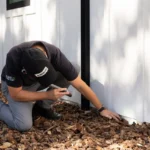If a pipe just burst, you need clear answers fast. Does homeowners insurance cover burst pipes? In many policies, it covers the resulting, sudden and accidental water damage—but not the pipe repair itself. Exact coverage can differ by state and by policy, so review your declarations page and confirm details with your insurer.
Quick Answers
- Does homeowners insurance cover burst pipes?
Often the resulting water damage is covered, while the pipe repair is not. Eligibility also depends on the cause, maintenance history, and any policy endorsements. - Does homeowners insurance cover water damage from burst pipes?
Often yes when the damage is sudden and accidental; long-term leaks, neglect, and mold beyond policy sublimits are commonly excluded.
Burst Pipes: What’s Covered vs. Not
| Scenario | What’s Typically Covered | What’s Typically Not Covered | Quick Notes |
| Sudden burst from freeze (heat on, home occupied) | ✅ Resulting water damage (drying, tear-out, repairs) | ❌ The pipe itself; code upgrades unless endorsed | “Sudden & accidental” is key. Keep utility bills if asked. |
| Appliance supply line fails (new/maintained) | ✅ Resulting water damage | ❌ The worn/defective part | Save the failed hose/part for the adjuster. |
| Slow leak over weeks/months | ❌ Usually excluded | — | Considered maintenance/neglect or long-term seepage. |
| Mold after a covered burst (prompt mitigation) | ✅ Often up to mold sublimit | ❌ Costs above sublimit | Many policies cap mold unless you buy higher limits. |
| Sewer or drain backup/overflow | ✅ With specific backup endorsement | ❌ Without endorsement | Ask about a “sewer/drain backup” or “sump overflow” endorsement. |
| Home left unheated during freeze | ❌ Often excluded | — | Lack of heat/maintenance can void freeze coverage. |
| Slab leak (cause unclear at discovery) | 🟨 Depends | 🟨 Depends | Sudden break may be covered; long-term seepage often isn’t. Investigation/pipe access varies by policy. |
| Upstairs bath overflow (sudden) | ✅ Resulting water damage | ❌ The failed component | Coverage focuses on damage caused by the water, not the part. |
| Temporary housing (ALE) when home is uninhabitable | ✅ With ALE coverage, up to limits | ❌ Above limits or for non-covered losses | Keep receipts; ALE applies only if the underlying loss is covered. |
Note: Policies differ by state and insurer. Coverage generally applies to sudden and accidental damage; wear, tear, and maintenance issues are commonly excluded. Always confirm specifics with your insurer and your policy declarations.
If you need immediate cleanup and drying, see burst-pipe water damage restoration for steps that prevent secondary damage.
How Homeowners Insurance Claims Work for Burst Pipes
Short answer: For many policies, claims go smoother when you act fast, document well, and keep everything in writing. Here’s the process—minus coverage details (handled elsewhere).
1) Start the claim correctly
- Open a claim once the water is off and the area is safe.
- Ask about approved mitigation vendors and any photo/video requirements before demo.
- Note your deductible, limits (dwelling, personal property, ALE), and claim number.
2) Build clear proof
- Capture time-stamped photos/videos of the source and all affected spaces.
- Bag and save the failed part (burst section/hose/fitting) for the adjuster.
- Keep dry-out logs, moisture/thermal readings, and all receipts for materials and services.
3) Mitigate quickly—scope after
- Start emergency mitigation (extraction, drying, dehumidification) to prevent secondary damage.
- Avoid major tear-outs until the adjuster or vendor documents conditions—unless there’s a safety risk.
4) Estimates, payments, and timelines
- Expect staged payments: mitigation first, then repairs after scope approval.
- Many policies pay ACV initially and release recoverable depreciation after work is completed and documented (for RCV policies).
- Keep a simple claim diary (dates, contacts, decisions) and confirm approvals in writing via the portal/email.
5) Strengthen your position
- Get an independent estimate if pricing or scope seems off.
- Inventory damaged contents with photos, age, and approximate value.
- Respond promptly to requests and upload documents in organized batches (photos, invoices, logs).
Pro tip: Ask for the insurer’s written scope and compare it line-by-line with your contractor’s estimate to resolve gaps early.
FAQs
Is a burst pipe considered “sudden and accidental”?
Usually yes, if the break and damage happen abruptly—not over weeks or months.
Does insurance pay to fix the pipe itself?
Often no. Policies tend to cover the resulting water damage, not the worn or failed part. Some endorsements differ.
Does insurance cover my damaged belongings after a burst pipe?
Often yes, under personal property coverage for a covered loss; limits and sublimits apply.
Do I have to use the insurer’s preferred contractor?
Usually no. You can choose your own qualified contractor, but the insurer may only pay reasonable market rates.
What if the home was vacant or unheated when the pipe burst?
Coverage can be limited or denied under vacancy/unoccupancy or lack-of-heat conditions. Check your policy terms.
If my burst pipe damages a neighbor’s unit, am I liable?
Possibly. Your liability coverage may respond if you’re found negligent; purely accidental events without negligence may not trigger liability.
How soon must I file a burst-pipe claim?
Policies require prompt notice—often immediately or within a set period. Report quickly and document the loss to avoid issues.

